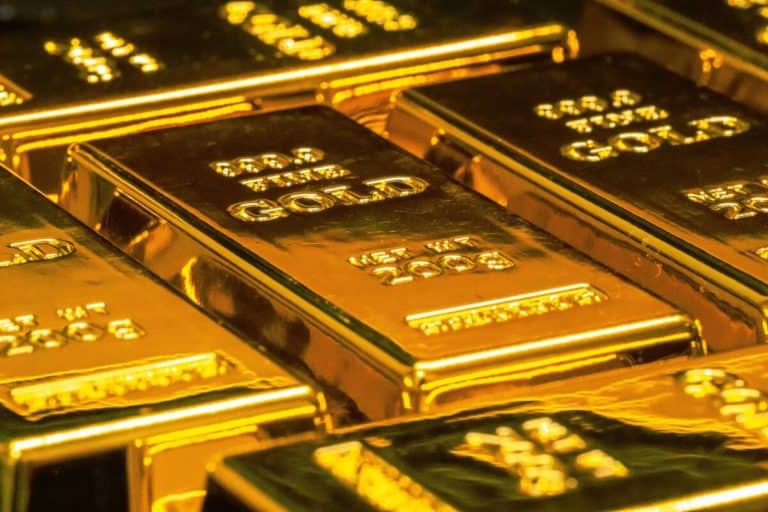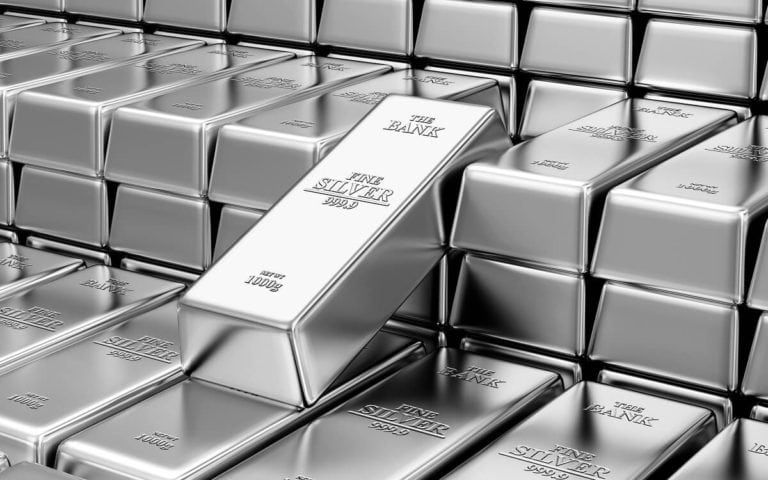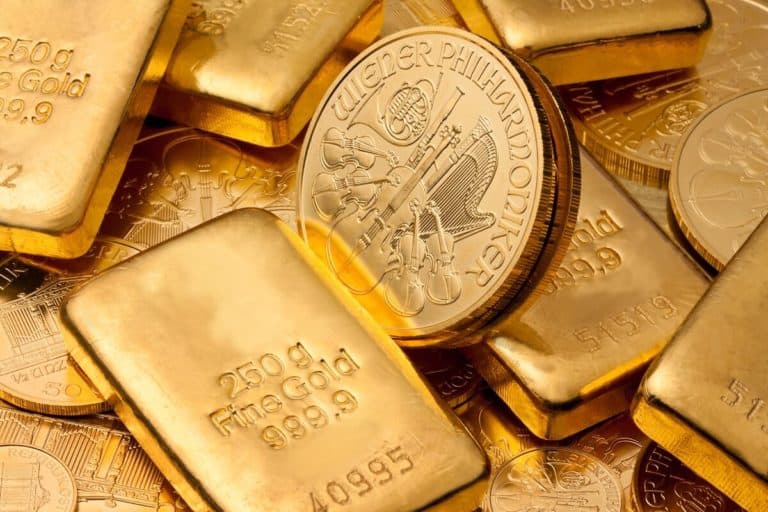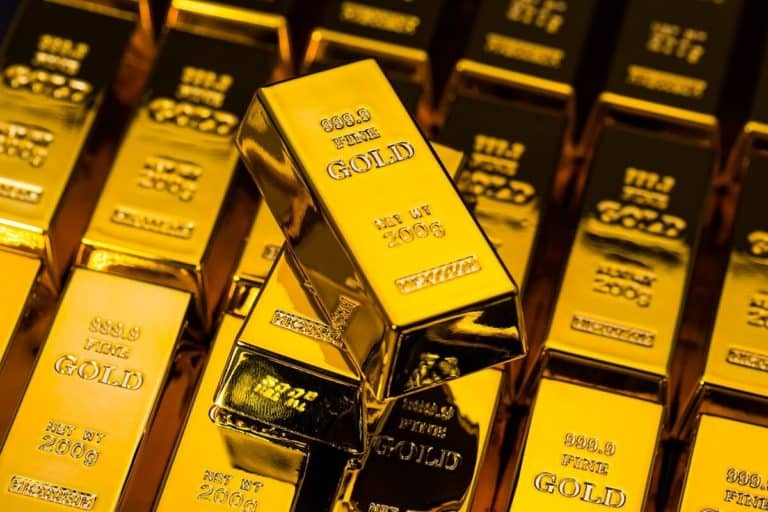- Our content is independently written and reviewed by trusted reviewers & fact-checkers.
- Your information is never sold. We can earn money by connecting you with top Gold IRA Companies. Learn how our reviews work.
- Want to learn more? Meet our authors and explore our editorial policy.
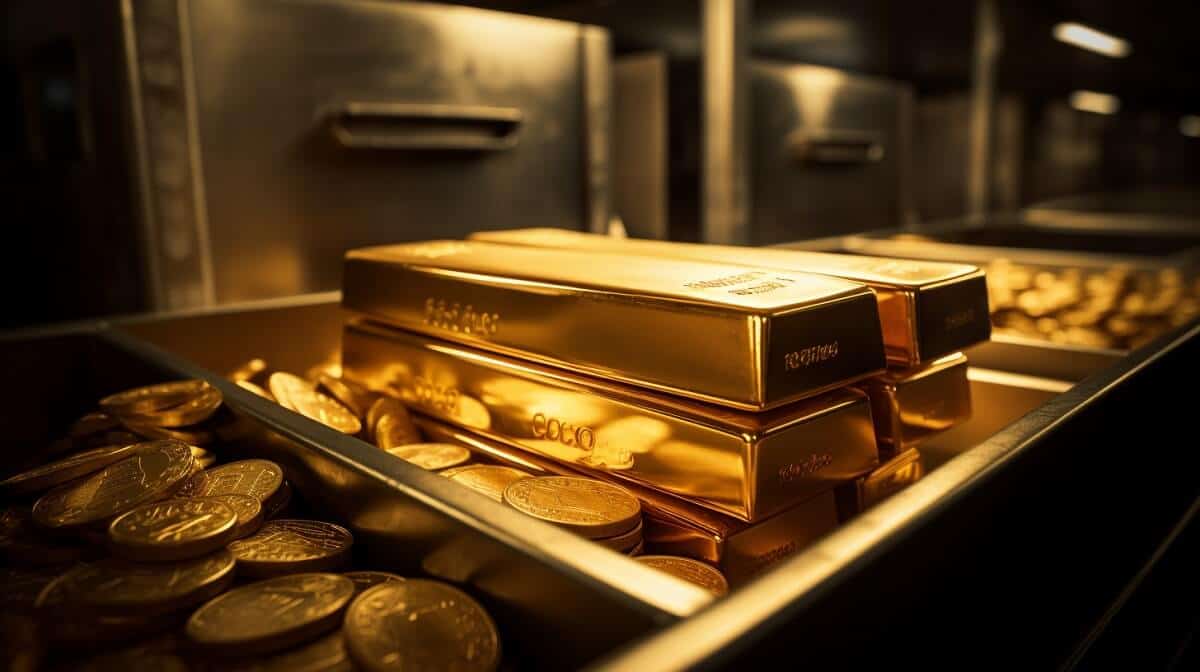
Based on historical data, it’s evident that there is a correlation between gold prices and interest rates. In this guide, we’re going to explore the nature of this correlation and what it means for gold investors.
Table of Contents
Basics of Interest Rates
Essentially, an interest rate is the percentage cost of borrowing money. It’s the amount lenders charge borrowers for access to funds, and it can also be the amount earned on deposited or invested funds.
There are different types of interest rates, and some of the main types include:
- Nominal interest rate: The most basic type, it doesn’t take factors like inflation into account. It’s simply the base rate charged by lenders.
- Real interest rate: This rate considers the impact of inflation on purchasing power. It’s calculated by subtracting inflation from the nominal rate.
- Fixed and variable interest rates: Fixed rates remain constant over a loan’s lifetime, while variable rates can change based on market conditions.
It’s worth pointing out that interest rates hold significant power over the economy. High rates encourage saving and discourage borrowing, which can slow down consumer spending and business growth.
Conversely, low rates increase borrowing and spending, potentially stimulating economic growth.
Factors That Affect Interest Rates
Interest rates are determined by a number of factors, including:
- Inflation: Central banks often increase interest rates to keep inflation under control. If prices rise too fast, a higher interest rate can slow spending and keep the economy balanced.
- Economic Growth: Solid growth could lead to rising prices. To keep this in check, central banks might raise interest rates.
- Government Debt: Countries with high public debt may raise interest rates to encourage people to buy bonds. Higher interest rates mean those who invest in bonds get a better return.
- Unemployment Rate: Central banks might lower interest rates to stimulate hiring. Lower interest rates can lead to more borrowing, boosting spending and hiring.
Basics of Gold Prices
Gold has value beyond its use in jewelry and other decorative items. Financial analysts often recommend that individuals include gold as part of their investment portfolios since it tends to remain more stable than many currencies during times when global markets are turbulent.
There are various ways to invest in gold, including:
- Physical gold: Buying gold bars or coins allows you to own the metal directly.
- Gold ETFs: Exchange-traded funds pool investor money to purchase gold, with shares representing partial ownership.
- Gold stocks: Shares of companies involved in gold mining or processing offer exposure to the gold market.
Factors That Affect Gold Prices
Here are some factors that affect gold prices:- Supply and Demand: Like most goods, gold prices are affected by supply and demand. If the demand for gold increases but the supply remains the same, the price will likely rise.
- Central Banks: These heavy hitters hold large amounts of gold. If they decide to sell or buy substantial amounts of gold, it can influence the global market and shift prices.
- Global Crises: Uncertain times often lead people towards “safe” options. Gold is one such option. When there’s political unrest or a financial collapse, people buy more gold, which pushes up the price.
- Inflation: As the cost of living goes up, fiat currencies lose some of their power. Gold often holds its value in such scenarios, causing more people to invest in gold and subsequently raising the price.
The Correlation between Interest Rates and Gold Prices
Understanding the connection between interest rates and gold prices is essential, especially for investors.
Now, interest rates do play a significant role in determining gold prices. In general, when interest rates are high, gold prices tend to decrease. Conversely, when rates are low, gold prices often increase. There are some primary reasons for this:
Opportunity Cost
When interest rates are high, people prefer to invest in low-risk instruments like bonds and savings accounts, which offer attractive returns.
On the other hand, during low-interest-rate environments, returns from these safe investments decrease. Consequently, investors begin to seek investments with higher returns, like gold, thus increasing gold prices.
For example, imagine you had $1,000 to invest. During high-interest-rate times, bonds might offer an annual return of 6%. In comparison, gold’s value might only increase by 3% per year.
In this scenario, you would likely choose bonds. However, if interest rates were low and bonds only provided a 1% return while gold maintained a 3% increase, you might select gold.
Inflation
Low interest rates often lead to inflation, reducing the value of the currency. Gold is widely considered an excellent hedge against inflation because its value tends to increase as the value of currency decreases.
Inflation erodes the purchasing power of money, but as gold prices increase, investors tend to flock toward gold, further increasing its price.
Currency Valuations
Gold prices often move opposite to the U.S. dollar value. When the U.S. dollar is strong, gold prices tend to go down, and when the dollar weakens, gold prices often rise.
This relationship exists because gold, globally, is priced in U.S. dollars. Therefore, a weaker dollar makes gold cheaper for foreign buyers, increasing demand and, thus, the price of gold.
For example, let’s assume you’re purchasing gold in Europe. If the dollar is very strong, you need to use more Euros to buy the same amount of gold you could buy previously.
Hence, the price of gold increases for you, and you’re less likely to buy, which decreases demand and lowers the price of gold.
On the other hand, if the dollar weakens, you’d need fewer Euros to buy the same quantity of gold, increasing your likelihood to buy, boosting demand, and therefore raising the price of gold.
Market Uncertainties
Gold often acts as a ‘safe haven’ during times of economic or political instability. In times of uncertainty, investors flock to gold due to its enduring value, thus causing its price to increase.
Final Remarks
The relationship between interest rates and gold prices is not a straightforward one. It is influenced by a host of factors, ranging from central bank policies to economic changes and political events. Therefore, any decision related to investment in gold must take into account this wide array of influences.
Frequently Asked Questions
Do Gold Prices Always Fall When Interest Rates Go Up?
Not always. While there is a recognized relationship between interest rates and gold prices, other factors such as political events, changes in the economy, and the fear of inflation can also influence the price of gold. These factors can sometimes even offset the effects of interest rate changes.
Can Gold Serve As a Protection Against Rising Interest Rates?
Yes, it can. Although gold does not earn any interest, its value can increase significantly during times of economic uncertainty or high inflation. So, investing in gold can help mitigate risks, even when interest rates are increasing.
How Does the Policy of Central Banks Impact the Correlation Between Interest Rates and Gold Prices?
The policies of central banks can significantly influence interest rates and, by extension, gold prices. For instance, if a central bank decides to lower interest rates, the price of gold may increase, with other factors remaining constant. This illustrates the interconnectedness of central bank policies, interest rates, and gold prices.
Are There Any Major Historical Events That Significantly Impacted Gold Prices?
Yes, there have been several major historical events that impacted gold prices, such as:
- The Bretton Woods Agreement (1944): This international monetary system established a fixed exchange rate for currencies and linked them to a specified amount of gold. The system collapsed in 1971, which led to the floating rates that we have today and created a new market for gold.
- The 1970s Oil Crisis: The increase in oil prices and geopolitical tensions during the 1970s resulted in high inflation. Many investors turned to gold as a hedge against inflation, leading to a surge in gold prices.
- The Global Financial Crisis (2007-2008): The financial crisis and the global recession that followed led to a significant loss of confidence in the financial system. Many investors sought refuge in gold as a safe-haven asset, which drove up gold prices.
Do Geopolitical Events Affect Gold Prices?
Yes, they do, as they can create uncertainty and instability in global markets. During such times, investors often seek “safe-haven” assets, such as gold, which are considered less risky and more stable compared to other investment options like stocks and currencies. As a result, gold prices often increase during periods of geopolitical tension.
Article Sources
At Gold IRA Blueprint, we dive deep into the world of gold IRAs, using trusted sources to back up our insights. Our sources range from official documents to expert interviews, ensuring our content is both accurate and reliable. We also draw on research from reputable publishers to give you the most comprehensive understanding possible. Check out our editorial policy to see how we maintain our high standards for accuracy and fairness. Also make sure to check out our Financial Review Process to have a better understanding of our process.
- Investopedia. (2020). What Drives the Price of Gold? Retrieved from https://www.investopedia.com/articles/investing/071114/what-drives-price-gold.asp
- The Balance. (2021). Interest Rates and How they Work. Retrieved from https://www.thebalancemoney.com/what-are-interest-rates-and-how-do-they-work-3305855
- Chards. (2023). The Correlation Between Gold Price and Interest Rate. Retrieved from https://www.thebalancemoney.com/what-are-interest-rates-and-how-do-they-work-3305855
- SmartAsset. (2023). Understanding the 7 Types of Interest Rate. Retrieved from https://smartasset.com/investing/understanding-the-7-types-of-interest-rate









